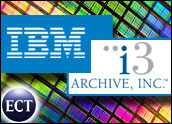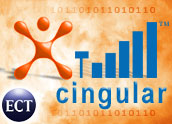
Hitachi said today that it is a step closer to releasing its version of next-generation storage technology: perpendicular recording, which allows for much more densely packed hard disk drives.
Hitachi expects to release a 1-terabyte drive by the end of the year and said that a group of its employees are in the midst of testing the technology. Perpendicular recording, so called because the tiny magnetic bits that hold information are standing on end instead of lying flat, can pack much more data into the same space.
Long-Anticipated Move
The hard-disk storage industry has been anticipating the move for more than 20 years, when the technology was first discussed, but John Buttress, IDC research manager for hard disk drives, said the risk of switching technologies overshadowed potential benefit until areal storage capacity began reaching its limits within current form factors.
Analysts predict perpendicular recording will become mainstream by 2007.
Seagate announced today that it, too, would begin shipping a version of the technology later this year. And Toshiba announced in December that it was planning to release its perpendicular recording technology in the form of two 1.8-inch hard disk drives sometime in the middle of this year. The drives will be designed for consumer hand-held devices such as digital music players.
Consumer Market First
Hitachi plans to introduce its new drives into consumer products with a 2.5-inch platter. The disks are expected to have a capacity of 120 gigabits per inch, although the company said it has successfully demonstrated perpendicular recording inside drives with areal densities of 230 Gbits per square inch.
Buttress said companies can use the new technology’s consumer products rollout to make sure the kinks are out of their manufacturing processes. “If you stumble you could lose market share, maybe permanently,” he said. “Companies want to make sure they have their process yields up to where they want them.”
Of course, the real issue is not how much can be stored, but what can be done with all this storage, and that is still up in the air.
“The question is, do we need 60 gigabytes on our cell phone? Well, it depends. We don’t know the answer because we don’t know where the market is going,” Buttress said. “It’s not just that you have to be able to do it, but do it reliably. Somebody’s got to come up with a reliable product that people want — or need.”






















































verticle recording is ancient idea that has out lived its time.
3d volume holographic will go from
10 terabytes to 10 petabytes.
$ .0004 a gigabyte !